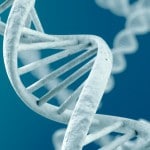The June 2015 issue of Washingtonian explores the latest advancements in fertility treatment that are helping patients to become pregnant. Eric D. Levens, M.D., of Shady Grove Fertility’s Annandale, VA, office explains these transformative fertility developments.
New Fertility Development #1: Egg Freezing

Vitrification—or fast-freeze technology—revolutionized the effectiveness of egg freezing, vastly improving success rates. What was once deemed “experimental” by the American Society for Reproductive Medicine (ASRM) (a label they lifted in 2012) has now moved to the forefront of public consciousness as a viable method to extend a woman’s fertility options.
Egg freezing provides an insurance policy, assuring women that they can have a family at the most optimal time, without having to worry about the proverbial “biological clock.” Egg freezing has become more readily available for women, and at Shady Grove Fertility there has been a 50 percent increase in the number of women freezing their eggs in the past 4 years.
New Fertility Development #2: Genetic Screening

Genetic screening has not only become more common, but testing has now expanded, screening for over 100 different diseases and syndromes. Known as preconception genetic screening (PGS), we test the male and female partners (if they choose) before moving forward with fertility treatment at SGF. Genetic screening tests for recessive gene mutations are available for the following categories:
- Mutations common in a certain ethnic group (for example: sickle cell anemia or Tay-Sachs disease)
- Mutations that have some likelihood of causing serious disease in affected offspring
In addition to screening before treatment, preimplantation genetic diagnosis (PGD) is another form of genetic testing. We use this technique, which involves the biopsy of a few embryonic cells, in conjunction with in vitro fertilization (IVF). PGD allows for the differentiation of healthy embryos and genetically-abnormal embryos, without causing any harm to the embryos. PGD can particularly be helpful for couples who have experienced recurrent miscarriage or unsuccessful IVF cycles, and for couples who are at risk of passing on an inherited genetic disease to their offspring.
New Fertility Development #3: Fewer Twins and Triplets

Dr. Levens says, “The greatest risk in any fertility treatment is not the treatment itself but carrying twins or triplets.” Multiple pregnancies create greater risks for both the mother and the babies. The mother may experience higher rates of pregnancy complications, such as gestational diabetes or pregnancy-induced hypertension, and the babies can be adversely affected by smaller sizes or premature delivery, to name a few.
SGF has pioneered elective single embryo transfer (eSET) to reduce the chance of multiples in good prognosis patients. For these patients, the chance of pregnancy with one single embryo is just as good as with two embryos, but without the increased risks associated with multiple pregnancies.
As part of our commitment at SGF to providing excellence in patient care, we employ a full-time dedicated research staff to bring the latest advancements and fertility developments to our patient community. Whether we’re improving egg freezing technology, expanding the genetic testing options available, or striving to reduce the risks associated with multiples, we are hard at work to improve our patients’ care experience.
To learn more about fertility developments, or to schedule an appointment, please speak with one of our New Patient Liaisons at 877-971-7755.





